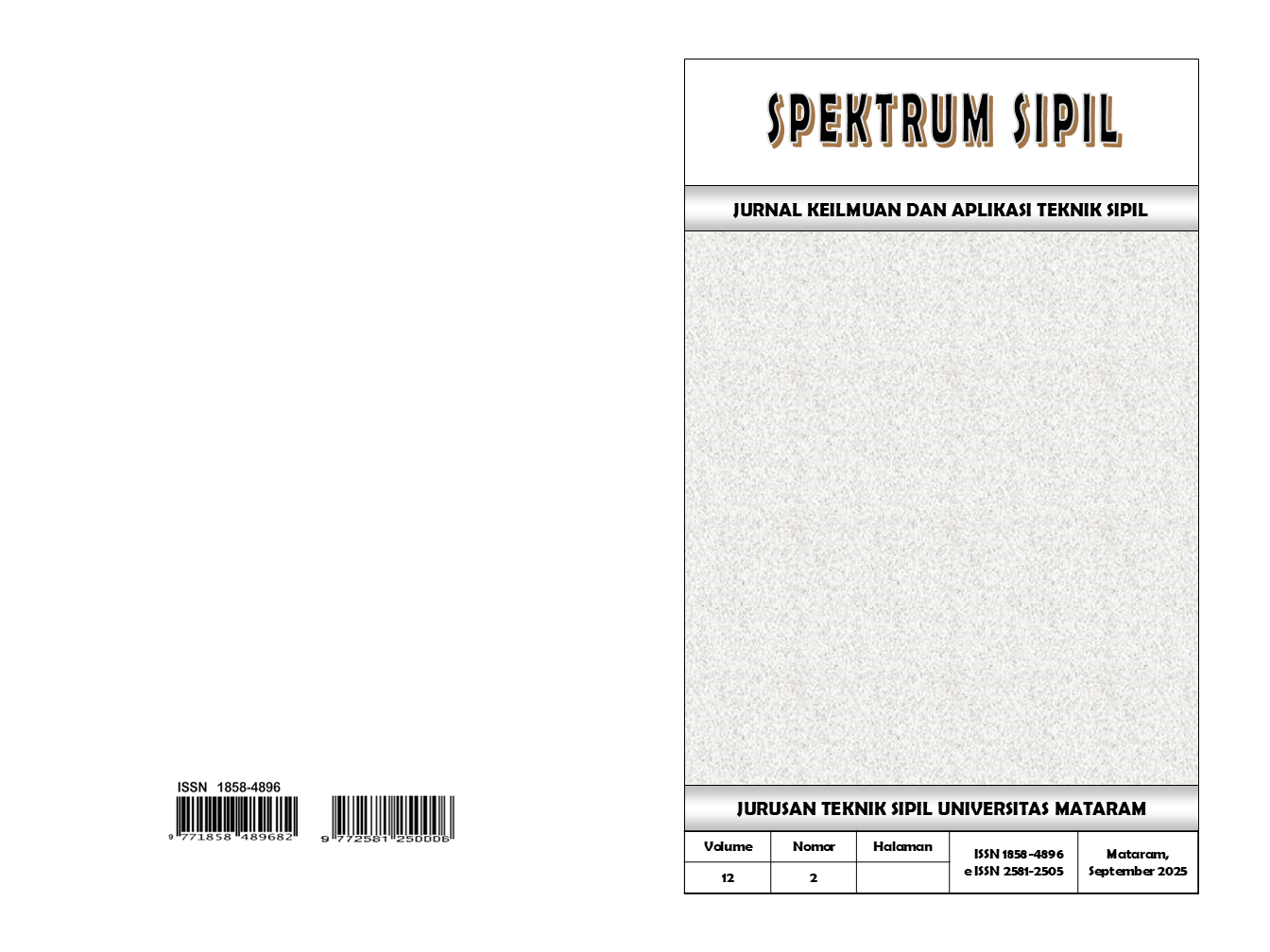STUDI EFEKTIVITAS ALAT BERAT I-CONSTRUCTION DALAM PENINGKATAN PRODUKTIVITAS PEKERJAAN TANAH DI TAKANERIKI, JEPANG
Study of i-Construction Heavy Equipment Effectiveness on Productivity for the Land Clearing Project in Takaneriki, Japan
DOI:
10.29303/spektrum.v12i2.409Published:
2025-10-02Issue:
Vol. 12 No. 2 (2025): SPEKTRUM SIPILKeywords:
i-Construction, Produktivitas alat berat, Machine guidance, Machine control, Efisiensi biayaArticles
Downloads
How to Cite
Downloads
Metrics
Abstract
Industri konstruksi saat ini mengalami transformasi digital melalui pemanfaatan i-construction yang mengintegrasikan Building Information Modeling (BIM), pemetaan UAV, serta sistem otomatisasi pada alat berat. Studi ini menganalisis efektivitas i-construction yang mengintegrasikan machine control dan machine guidance di bandingkan metode konvensional pada pekerjaan tanah di Takaneriki, Kota Taketa, Prefektur Oita, Jepang. Dengan parameter: produktivitas, tenaga kerja, biaya sewa alat dan kualitas presisi. Hasil menunjukkan peningkatan produktivitas signifikan: excavator naik 26,9% dan bulldozer naik 28,2%. Meski biaya sewa alat i-construction lebih tinggi (excavator +179,18% dan bulldozer +171,18%), efisiensi dicapai melalui pengurangan tenaga kerja dari tiga menjadi satu orang dan percepatan waktu kerja. Hal ini menurunkan biaya tenaga kerja lebih dari 60% dan menghemat total biaya proyek sebesar 19,11%. Dari aspek kualitas presisi, deviasi pekerjaan sangat rendah (6,0 cm pada tanggul dan 2,4 cm pada perataan ladang), jauh di bawah toleransi, sehingga meminimalkan rework. Temuan menegaskan i-construction meningkatkan produktivitas, efisiensi biaya, dan presisi.
References
Alaloul, W. S. , Liew, M. S., Zawawi, N. A. W. A. , & Kennedy, I. B. (2019). Industrial Revolution 4.0 in the construction industry: Challenges and opportunities for stakeholders.
Alliance, B. S. (2015). National BIM Standards-United States. National Institute of Building Science.
Ayele, S., & Fayek, A. R. (2019). Kerangka kerja untuk pengukuran produktivitas total proyek konstruksi industri.
Darmastuti, F. C. (2024). Analisis Kesesuaian Pelaksanaan Pengendalian Mutu Pada Pekerjaan Struktur Atas dalam Proyek Pembangunan Gedung Biara Santa Anna.
Departemen Teknik Sipil Aichi. (t.t.). Pekerjaan pemanfaatan TIK Aichi. aichi. Diambil dari www.pref.aichi.jp/soshiki/kensetsu-kikaku/i-con-sekou.html
Fardila, D., & Adawyah, N. R. (2021). Optimasi Biaya dan Waktu Proyek Konstruksi dengan Lembur dan Penambahan Tenaga Kerja. INERSIA: lNformasi dan Ekspose hasil Riset teknik SIpil dan Arsitektur, 17(1), 35–46. https://doi.org/10.21831/inersia.v17i1.39499
Hermawan, I., Sudirman, S., Perencanaan, D., Tol, J., & Karya, H. (t.t.). Digitalisasi Industri Konstruksi dengan Integrasi BIM dan 3D Machine Control untuk Meningkatkan Performa Pelaksanaan Konstruksi. https://doi.org/10.28932/jts.v1xix.x
Hernandi, Y., & Tamtana, J. S. (2020). FAKTOR-FAKTOR YANG MEMPENGARUHI PRODUKTIVITAS PEKERJA PADA PELAKSANAAN KONSTRUKSI GEDUNG BERTINGKAT. JMTS: Jurnal Mitra Teknik Sipil, 3(2), 299–312.
Hiroko Tokura. (t.t.). Asian Base Station Network Project. Diambil dari https://www.facebook.com/groups/Base.station.GSPASE/http://gnss-learning.org/
Irizarry, Javier, & Bastos Costa, D. (2016). Studi Eksplorasi Potensi Aplikasi Sistem Udara Tak Berawak untuk Tugas Manajemen Konstruksi.
Jovanović, M., Raković, M., Tepavčević, B., Borovac, B., & Nikolić, M. (2017). Robotic fabrication of freeform foam structures with quadrilateral and puzzle shaped panels. Automation in Construction, 74, 28–38. https://doi.org/10.1016/J.AUTCON.2016.11.003
Komatsu. (t.t.). Crawler dozer D61PXI-24 intelligent machine control.
Lin, S. S., Shen, S. L., Zhou, A., & Xu, Y. S. (2021). Risk assessment and management of excavation system based on fuzzy set theory and machine learning methods. Automation in Construction, 122, 103490. https://doi.org/10.1016/J.AUTCON.2020.103490
Ministry of Land, I. T. and T. (2024). i-Construction 2.0 -Otomatisasi lokasi konstruksi.
Ministry of Land, I. T. and T. (t.t.). Buku Pegangan Teknologi MC/MG (Edisi Backhoe).
Moon, S. (2018). Efektivitas model bisnis untuk mengadopsi sistem panduan mesin konstruksi. Jurnal KIBIM.
Olawumi, T. O., & Chan, D. W. M. (2018). Identifying and prioritizing the benefits of integrating BIM and sustainability practices in construction projects: A Delphi survey of international experts. Sustainable Cities and Society, 40, 16–27. https://doi.org/10.1016/J.SCS.2018.03.033
Otsuki, T., Morikawa, H., Shiiba, Y., Ogata, S., & Moteki, M. (2020). Research on standardization of construction site time-series change information as learning data for automatic generation of work plan of construction machinery in earthworks (Vol. 2020).
Rachman, A., & Purnomo, H. (2024). Metode Penelitian Kuantitatif, Kualitatif dan R&D.
Rachman, T. A., & Firdaus, M. (2024). ANALYSIS OF HEAVY EQUIPMENT MANAGEMENT BASED ON COST AND TIME VALUES IN THE LOCAL ROAD IMPROVEMENT PROJECT PACKAGE 6. Jurnal Teknik Sipil, 24(3), 1160. https://doi.org/10.26418/jts.v24i3.82050
Rostiyanti, S. F. (2008). Alat Berat Untuk Proyek Konstruksi.
Sidiq Ramadhan, J., & Oei Fuk Jin, dan. (2024). STRATEGI PENGEMBANGAN TEKNOLOGI DIGITAL DALAM METODE KERJA DI INDUSTRI KONSTRUKSI UNTUK PEMBANGUNAN NASIONAL (Vol. 7).
Tateyama, K. (2016). Achievement and future prospects of ICT construction in Japan. Journal of Robotics and Mechatronics, Vol. 28, hlm. 123–128. Fuji Technology Press. https://doi.org/10.20965/jrm.2016.p0123
Tateyama, K., & Yokoyama, T. (2016). TIK Konstruksi menggunakan Kemajuan dan prospek masa depan. Kota Kusatsu. Diambil dari www.onlinedoctranslator.com
Topcon, P. S. (t.t.). Topcon manual book’s.
Wahyuningsih, S. (2019). PENGARUH PELATIHAN DALAM MENINGKATKAN PRODUKTIVITAS KERJA KARYAWAN.
Author Biographies
Ahmad Sugian, Universitas Mataram
Ida Ayu Oka Suwati Sideman, Universitas Mataram
Lalu Wirahman Wiradarma, Universitas Mataram
License
Copyright (c) 2025 Ahmad Sugian, Ida Ayu Oka Suwati Sideman, Lalu Wirahman Wiradarma

This work is licensed under a Creative Commons Attribution 4.0 International License.
You are free to:
- Share — copy and redistribute the material in any medium or format for any purpose, even commercially.
- Adapt — remix, transform, and build upon the material for any purpose, even commercially.
The licensor cannot revoke these freedoms as long as you follow the license terms.
Under the following terms:
- Attribution — You must give appropriate credit, provide a link to the license, and indicate if changes were made. You may do so in any reasonable manner, but not in any way that suggests the licensor endorses you or your use.
- No additional restrictions — You may not apply legal terms or technological measures that legally restrict others from doing anything the license permits.
Notices:
You do not have to comply with the license for elements of the material in the public domain or where your use is permitted by an applicable exception or limitation.
No warranties are given. The license may not give you all of the permissions necessary for your intended use. For example, other rights such as publicity, privacy, or moral rights may limit how you use the material.












